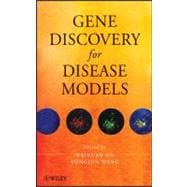
Note: Supplemental materials are not guaranteed with Rental or Used book purchases.
Purchase Benefits
What is included with this book?
| Preface | p. vii |
| Acknowledgments | p. ix |
| Contributors | p. xi |
| Gene Discovery: From Positional Cloning to Genomic Cloning | p. 1 |
| High-Throughput Gene Expression Analysis and the Identification of Expression QTLs | p. 11 |
| DNA Methylation in the Pathogenesis of Autoimmunity | p. 31 |
| Cell-Based Analysis with Microfluidic Chip | p. 59 |
| Missing Dimension: Protein Turnover Rate Measurement in Gene Discovery | p. 83 |
| Bioinformatics Tools for Gene Function Prediction | p. 93 |
| Determination of Genomic Locations of Target Genetic Loci | p. 111 |
| Mutation Discovery Using High-Throughput Mutation Screening Technology | p. 139 |
| Candidate Screening through Gene Expression Profile | p. 165 |
| Candidate Screening through High-Density SNP Array | p. 195 |
| Gene Discovery by Direct Genome Sequencing | p. 215 |
| Candidate Screening through Bioinformatics Tools | p. 235 |
| Using an Integrative Strategy to Identify Mutations | p. 261 |
| Determination of the Function of a Mutation | p. 279 |
| Confirmation of a Mutation by Multiple Molecular Approaches | p. 303 |
| Confirmation of a Mutation by MicroRNA | p. 343 |
| Confirmation of Gene Function Using Translational Approaches | p. 371 |
| Confirmation of Single Nucleotide Mutations | p. 391 |
| Initial Identification and Confirmation of a QTL Gene | p. 403 |
| Gene Discovery of Crop Disease in the Postgenome Era | p. 425 |
| Impact of Genomewide Structural Variation on Gene Discovery | p. 443 |
| Impact of Whole Genome Protein Analysis on Gene Discovery of Disease Models | p. 471 |
| Index | p. 531 |
| Table of Contents provided by Ingram. All Rights Reserved. |
The New copy of this book will include any supplemental materials advertised. Please check the title of the book to determine if it should include any access cards, study guides, lab manuals, CDs, etc.
The Used, Rental and eBook copies of this book are not guaranteed to include any supplemental materials. Typically, only the book itself is included. This is true even if the title states it includes any access cards, study guides, lab manuals, CDs, etc.